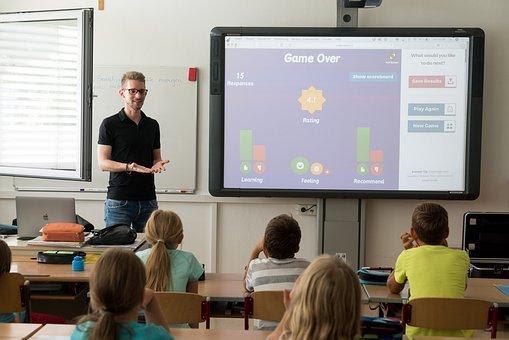Technology has become an inherent part of our daily lives. We are now carrying out basic tasks at the comfort and convenience of hand-held gadgets. Who would have ever thought that the world would progress so rapidly? Technology now sits at the core of how we live, interact, work, and even play.
Today, technology is ubiquitous in almost every industry. Although the education sector is slow to catch up with the rest, is not lagging anymore. It is a breath of fresh air, presenting a terrific opportunity for both teachers and learners to explore and develop novel ways for learning.
There always has been a concern whether the adoption of tech in schools significantly contributes to low engagement levels in classrooms. Access to digital devices in class is quite distractive, and it does encourage cheating. It is a tad counterproductive to the objective of classroom set-ups. However, we can choose to look at tech as the villain or find a way to reconcile the up and downsides.
The truth of the matter is that current students have grown up in the age of tech. It has been woven into their entire lives. All the more so, it is also shaping what lies ahead of their future, both for personal and professional reasons.
What Can We Expect?
With the right policies, there is immense potential to be realized as we incorporate tech in education. It should be geared towards improving engagement and effectiveness in class. Tech is about enhancing the interaction between the teacher and the learner. It is about creating new opportunities for learning to boost the education sector, such as
- Digital learning environments.
- Hybrid courses.
- Personalized instruction.
- Innovative learning.
- Collaboration.
Why Do We Need Technology in the Classroom?

The leading case for including tech in the classroom is to establish an effective system to refine class engagement. First and foremost, tech gives students access to multiple styles of learning. At their convenience, they can access various sources of relevant learning material. It includes published papers, journals, audio, video files, etc. The approach seeks to integrate different types of learners in the curriculum. It ensures that a student learns through their most effective means.
Tech also encourages collaboration between the stakeholders. It creates reliable interaction platforms that enable students and instructors to come together to work on school projects, ideas, and innovations. It also extends to collaborations among different institutions. It removes the geographical barrier that previously impeded joint efforts.
The accessibility to up-to-date information and resources to supplement existing literature also makes a compelling case. This generation of students can now quickly and easily find credible sources of information relevant to their studies. This can be demonstrated clearly by students seeking reliable assistance from essay writers online.
Just as important, tech is also the gateway to numerous opportunities for both personal and professional growth. For starters, having tech in school teaches you how to use your devices responsibly. It serves as a preparation for your future careers. As a matter of fact, some of the skills you learn in school might pave the way for your future profession. Tech is fast emerging to be a basic life skill.
Concerning opportunities, tech is changing the passive school model. It presents avenues for students to be vastly engaged and remarkably interconnected. It is honing how we learn in the present-day as it rapidly reshapes the learning experience.
Should We Be Concerned?
To fully understand the impact that tech has in the education sector, it would be prudent to look at the flip side. The main concern still remains to be the potential for distraction. Some students will undoubtedly find it quite challenging to maintain concentration in class with the devices in proximity. It can also be equally distracting for people around the users.
There also is concern about whether integrating tech in school is going to affect social interaction. Through the digital age, the plight of loneliness and isolation has been charged by our virtual interconnectedness. The predicament might not be any different in the school set-ups.
How do we manage to reap the full benefits of tech while we mitigate the risks? It is a question that has been raking the minds of many in the sector. There is yet to be a clear answer, but the efforts remain relentless. Here is where we can start. We can develop a progressive tech culture in our institutions. A culture that promotes respect and responsibility, both individually and collectively.